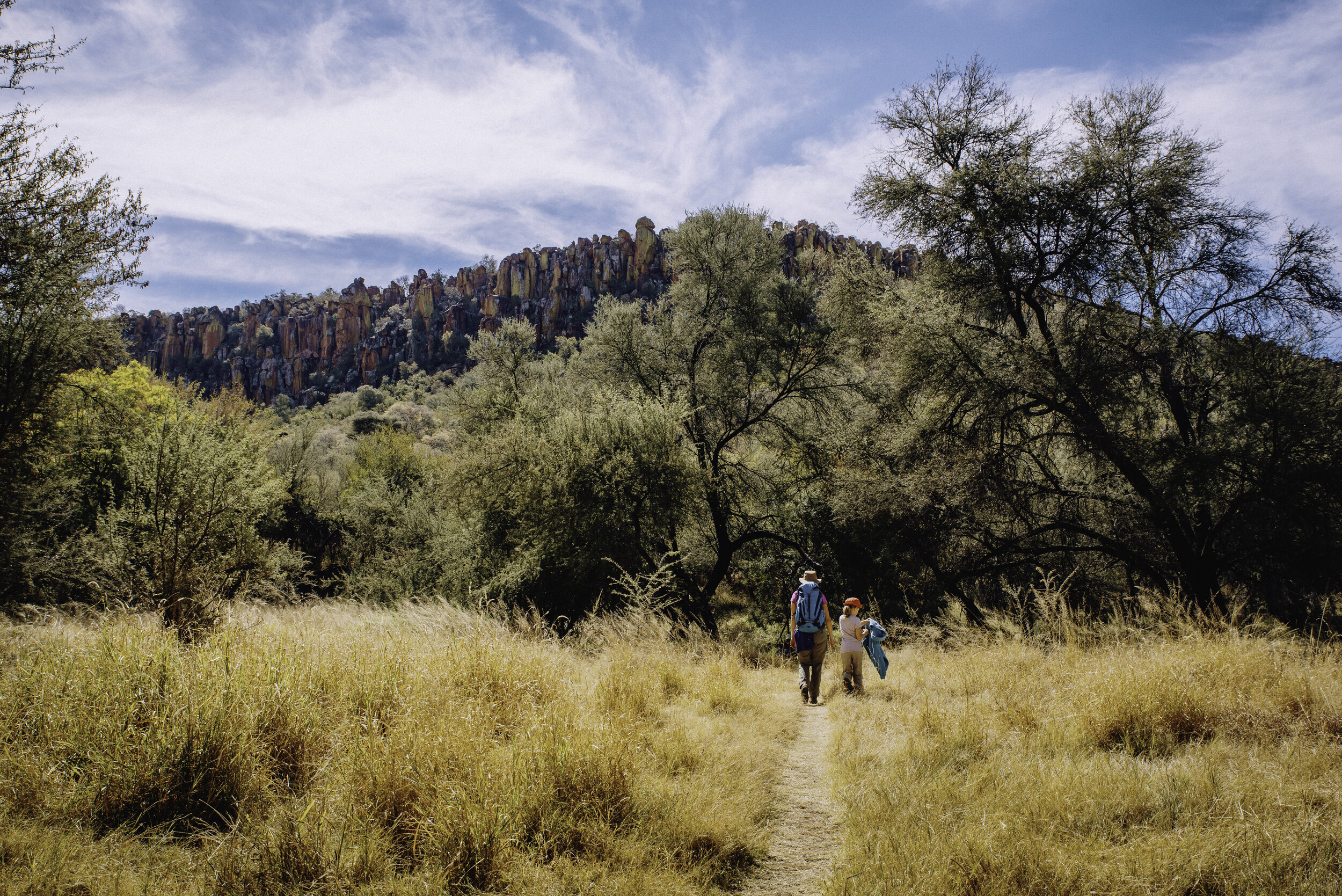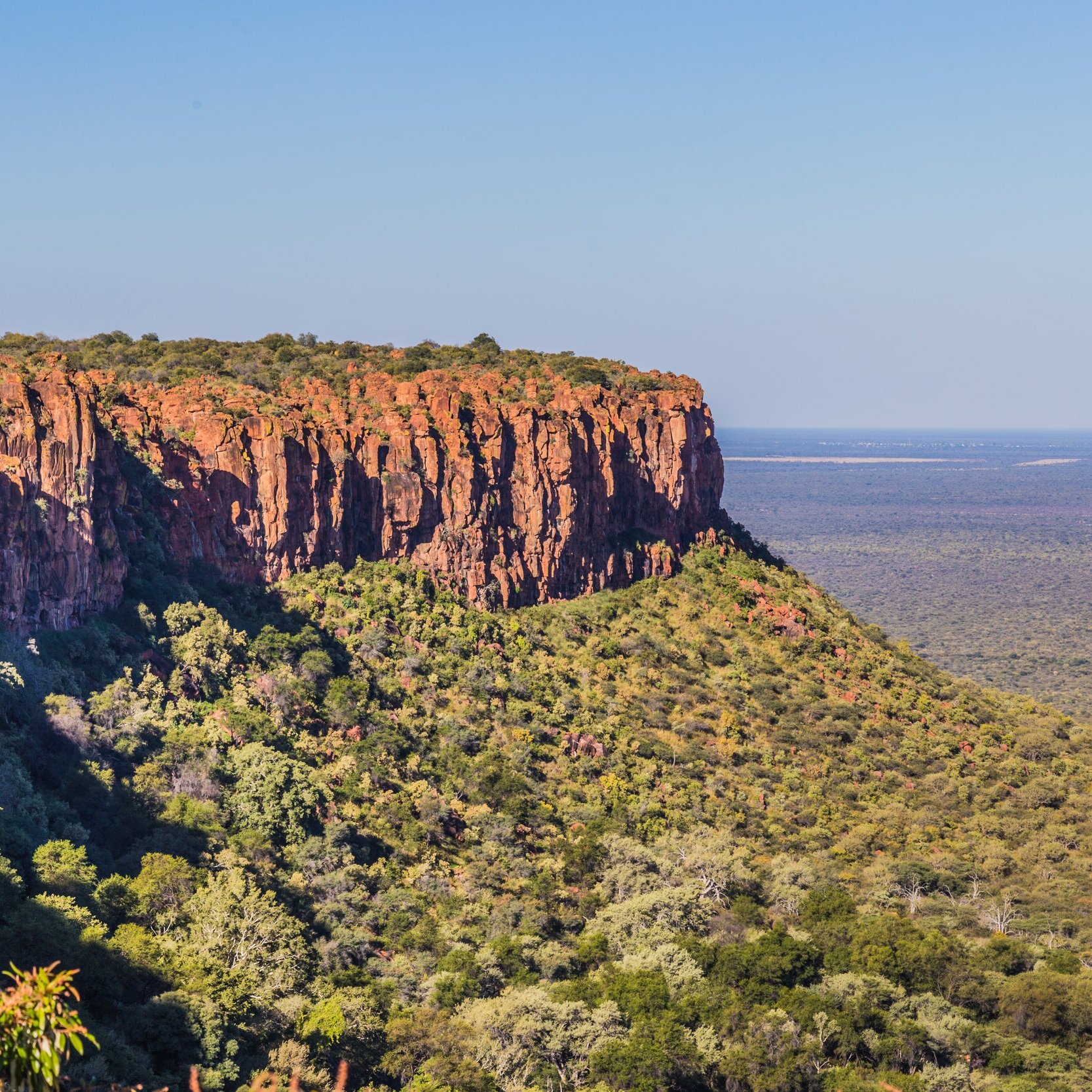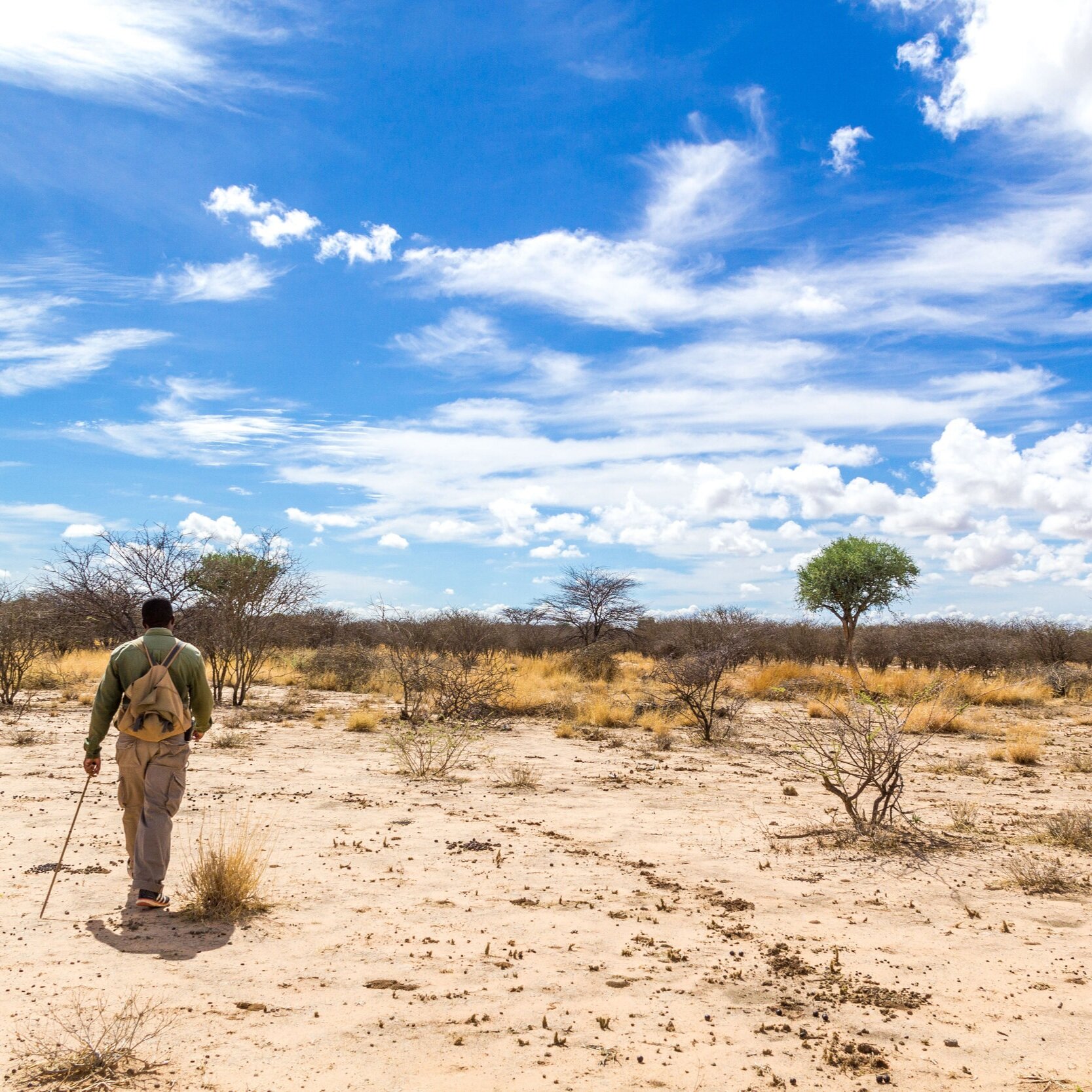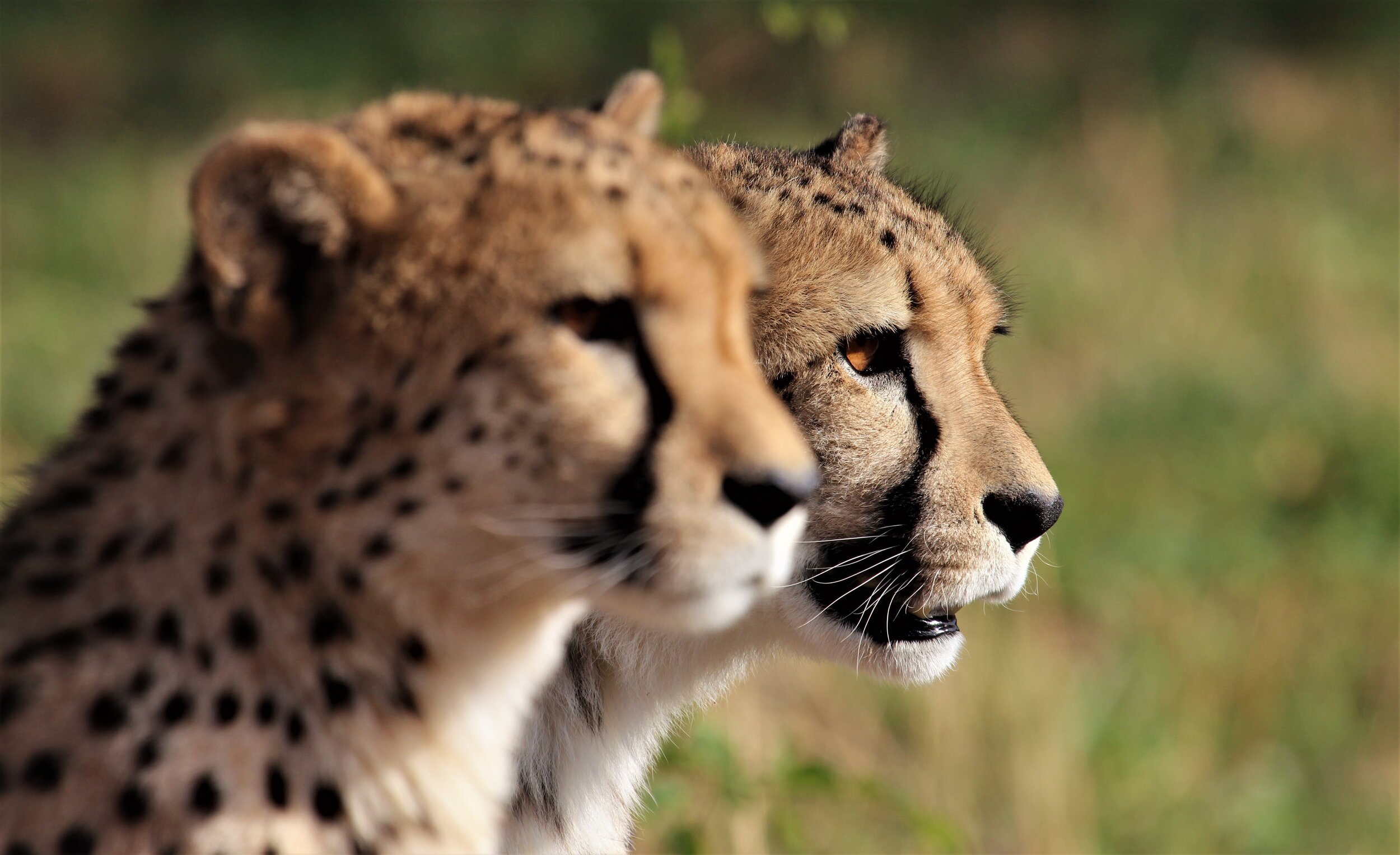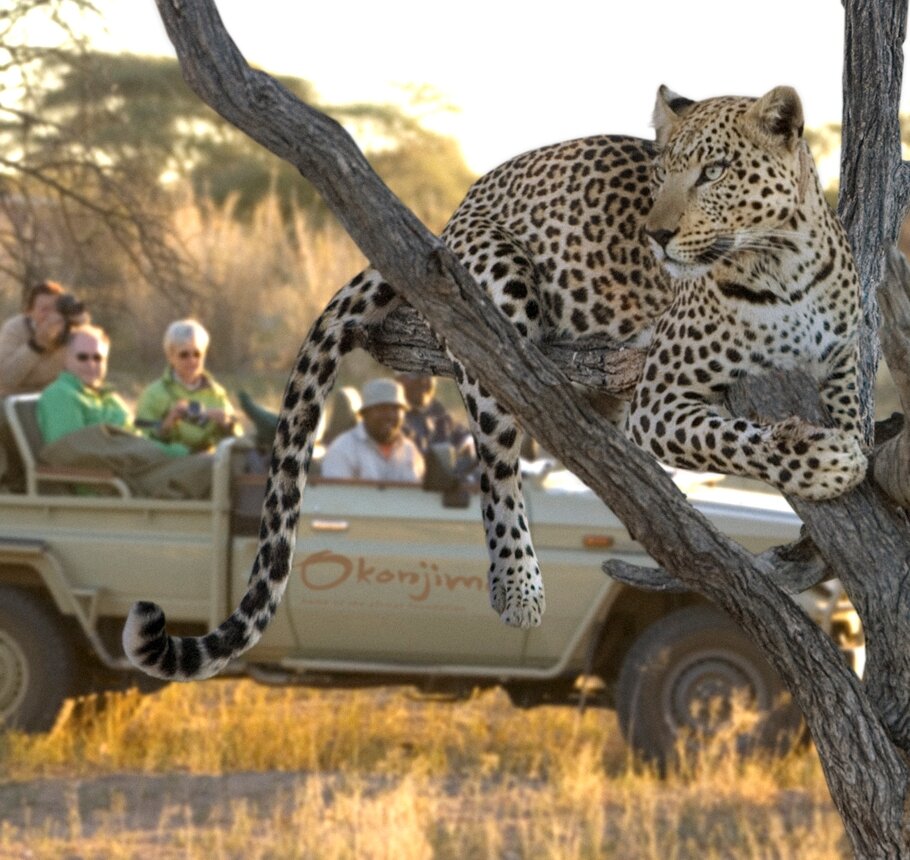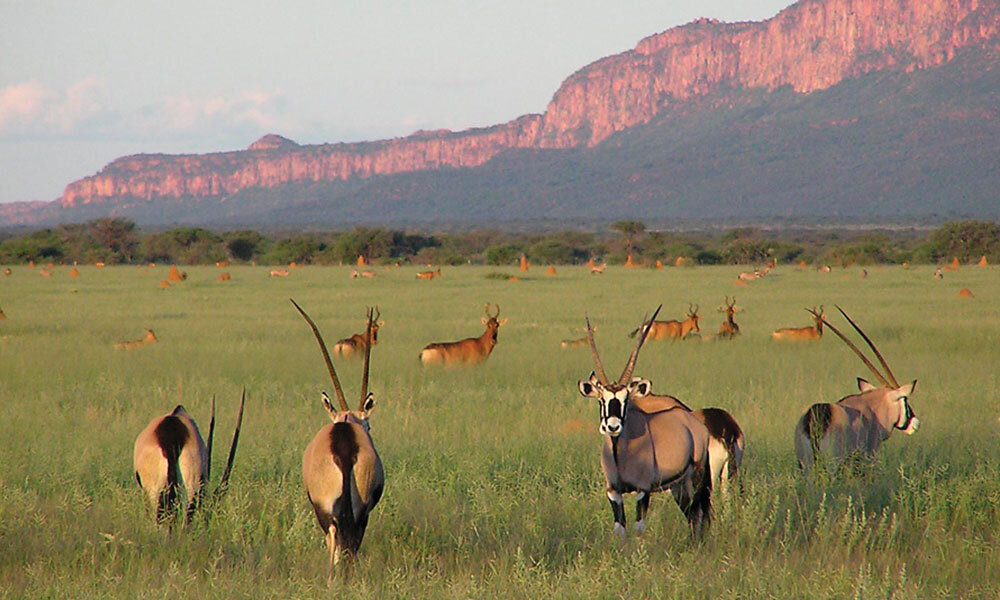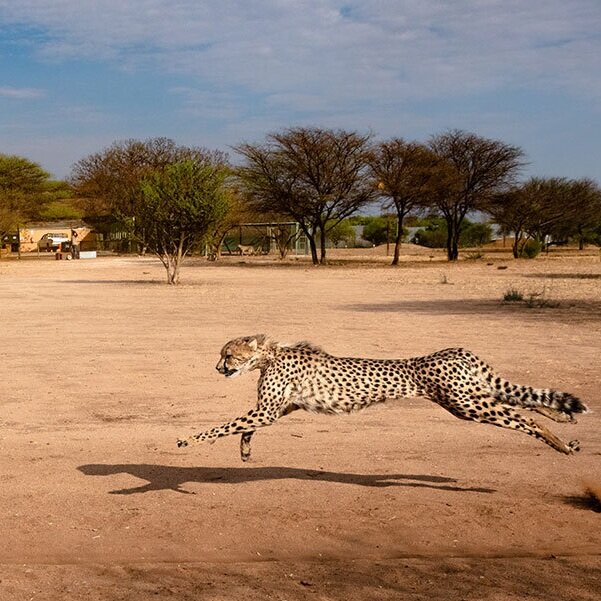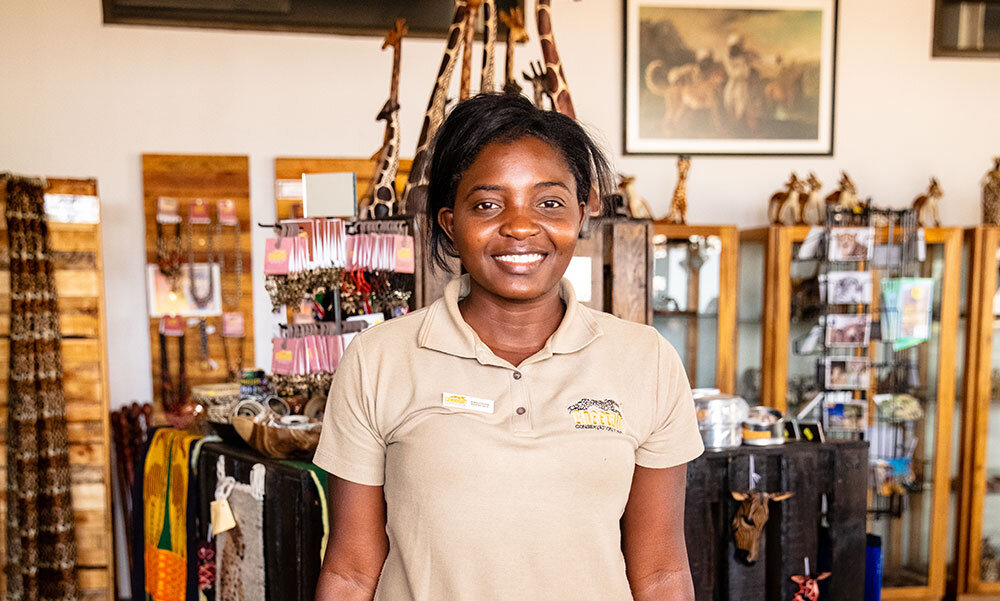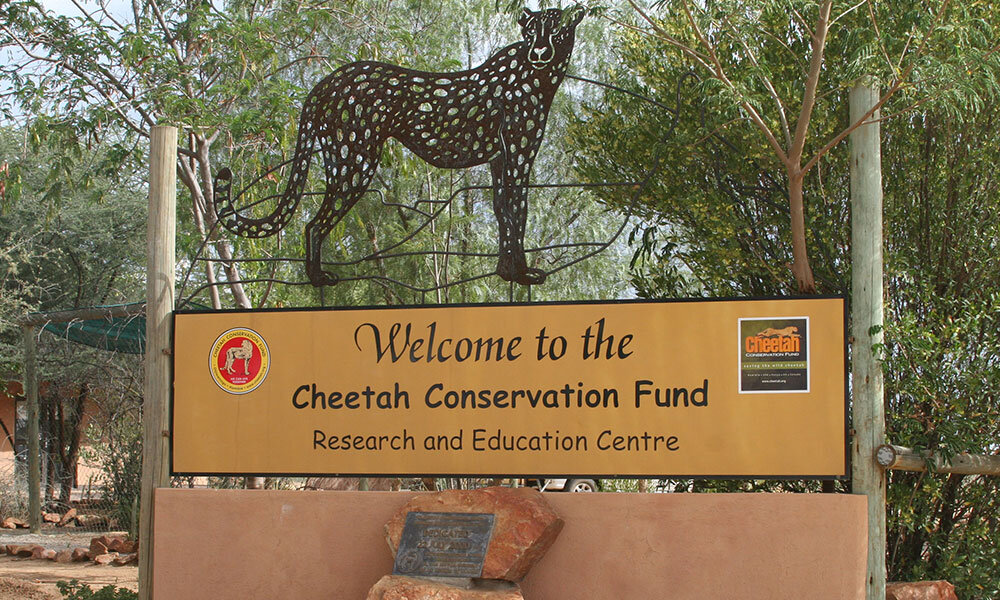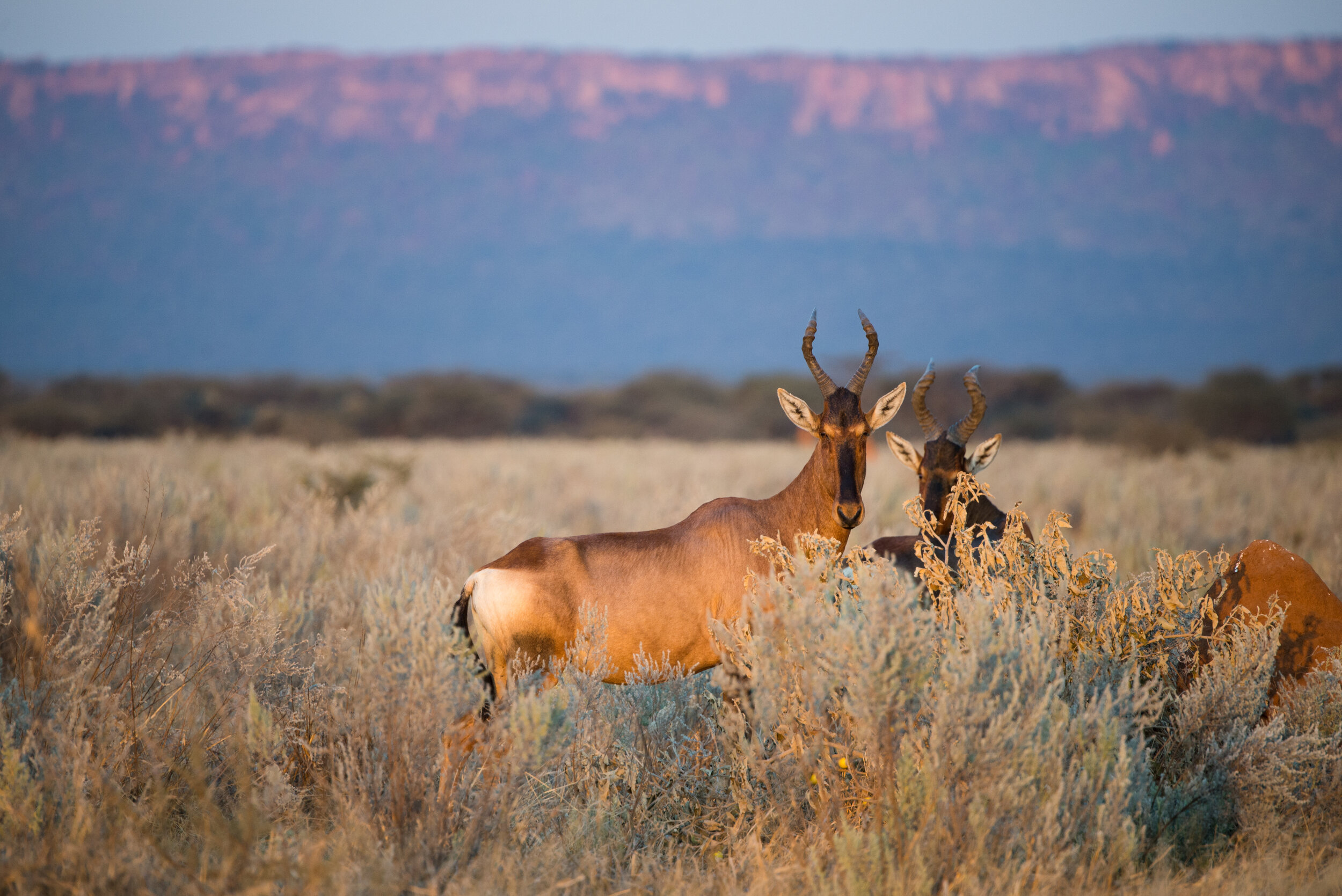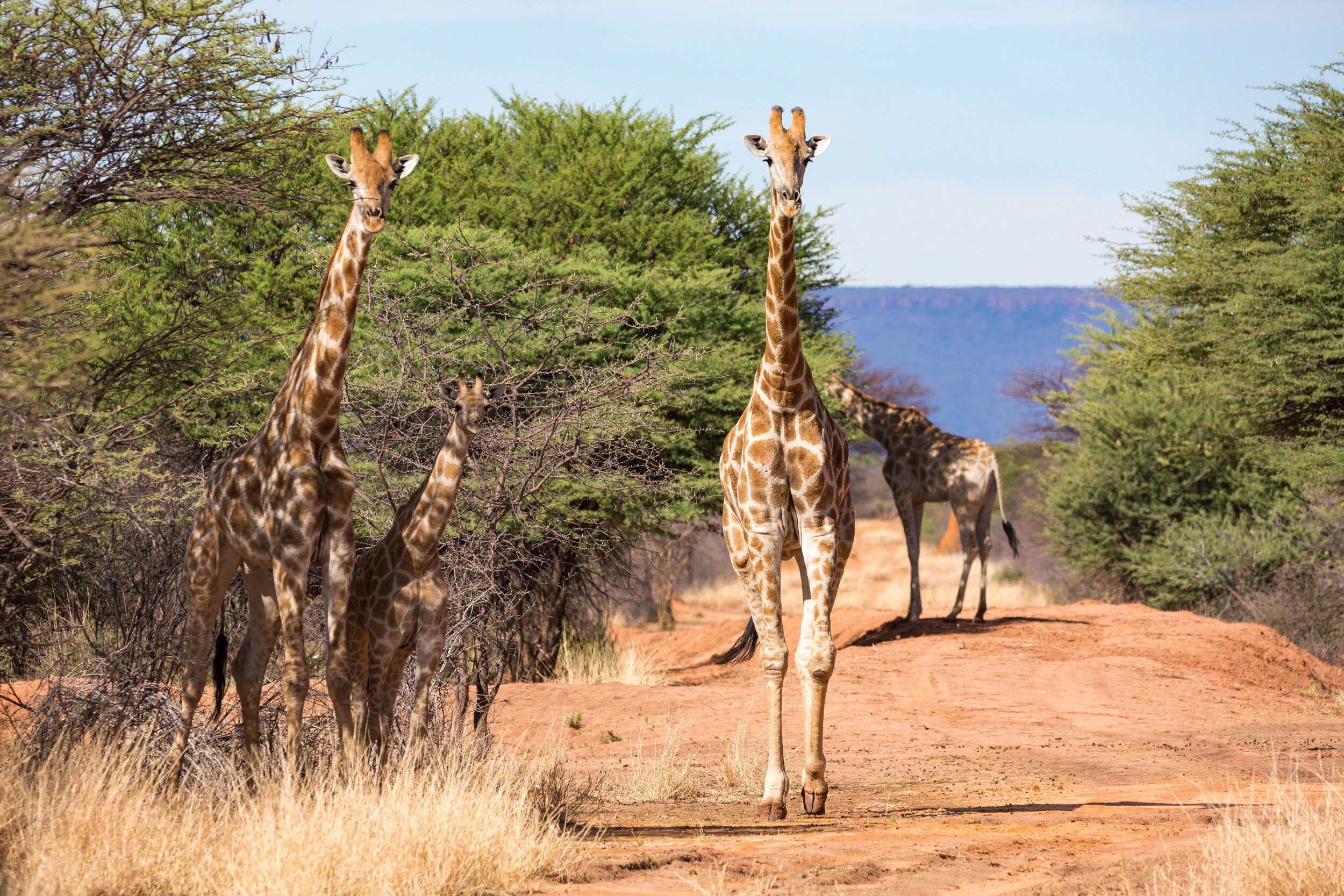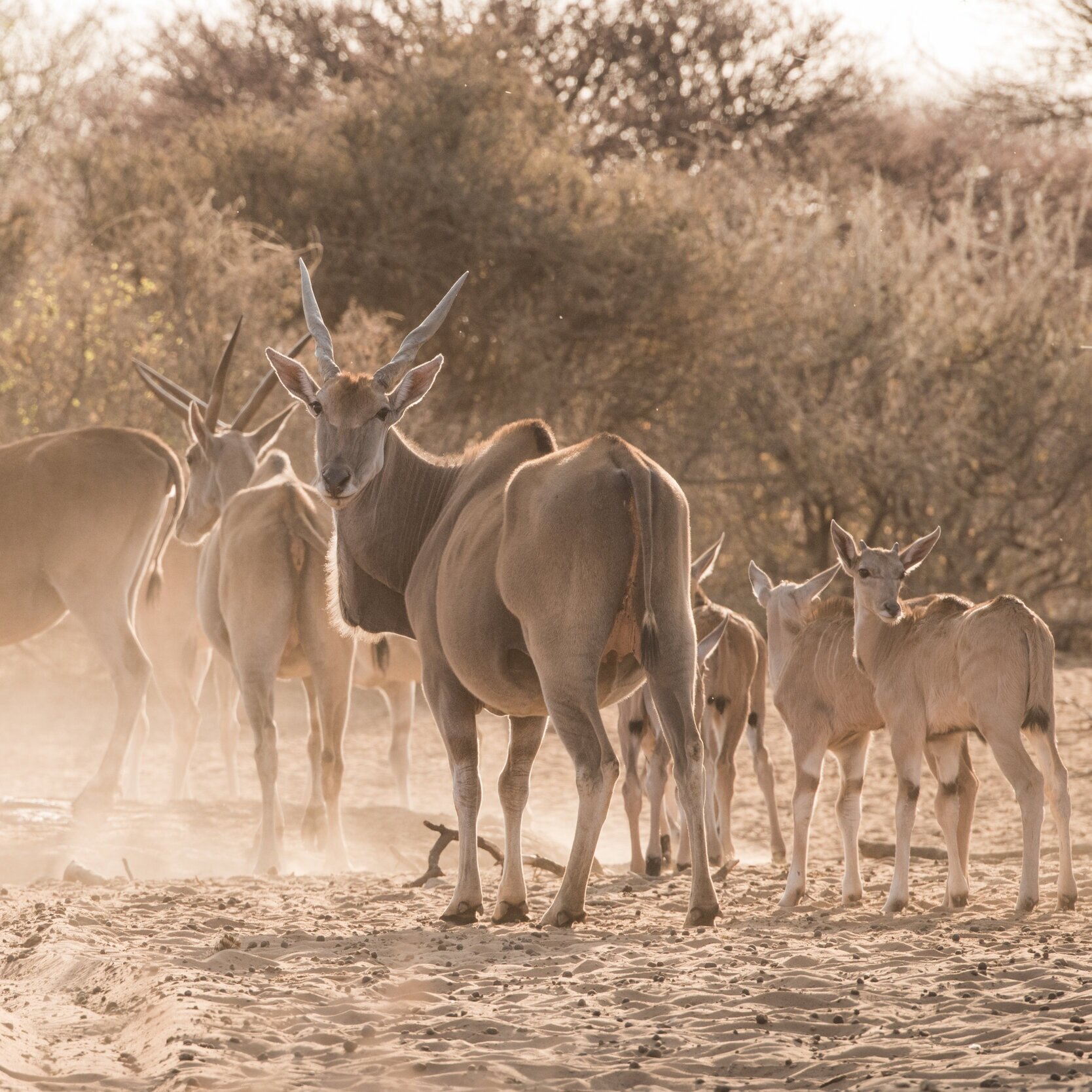A Complete Guide to the Waterberg Plateau & its Hikes
Written by Jess Tyrrell
Ascending skyward from the thorn-treed plains of the Kalahari is a towering ocherous flat-topped plateau. The isolated 200 million-year-old red sandstone Waterberg (“water mountain”) Plateau is home to myriad wildlife, including some of Africa's most endangered species. Hikers, do we have your attention? Good, because this is a hikers haven, with various hikes on offer!
Waterberg Plateau National Park, the plateau being its namesake, is a 41.000 ha sanctuary that encompasses the plateau and its medley of habitats, including shaded wooded areas, grasslands, and cool ravines fed by several springs. The rock-studded ridge of the plateau, juxtaposed with vibrant greenery, extends for more than 300 km and reaches 250 m high, atop which there are uninterrupted views of the surrounding wilderness. There are several activities for travellers to sink their teeth into, including game drives, bird-watching, Herero cultural tours as well as historical and archaeological site seeing.
The Waterberg Plateau National Park, and adjacent Waterberg Wilderness Private Nature Reserve, are natural and adventure spectacles that you do not want to miss! Read on for everything you need to know before planning your trip.
What to expect:
Location
Seasonality
What to do
Wildlife
Accommodation
How to include it in your trip
Location
The Waterberg Plateau National Park is located in northern Namibia, about 300 km northeast of Windhoek (3.5-hour drive), and about 320 km southeast of Etosha National Park (4-hour drive). The closest town is Otjiwarongo (Herero for “a good place”), 68 km to the east. The Waterberg Plateau National Park road is in good enough condition for normal 2x4 cars, although we recommend renting a 4x4 for Namibian road trips.
Seasonality
The best time of the year to visit is during the dry season/winter, (from July to September) as animals seek out and base themselves near water sources and temperatures are pleasant and warm. The foliage also shrinks back, making for easier wildlife watching. Between May and August, early mornings and evenings can be very cold (5°C) which makes for great hiking, but pack warm enough clothes! From September to October, early mornings and evenings are also a brisk 12°C.
The low season is in summer, between November and May, as daily temperatures can exceed 30°C and there are occasional thunderstorms (dramatic and brief Namibian thunderstorms are a serious sight to behold!). January to March is the wettest time of the year, although the sun shines most of the day. The vegetation is lush at this time of year, with flowers dotting the craggy slopes and newborn baby animals around.
What to do
Delight in scenic strolls, rewarding hikes, birding, and game drives amidst lush and mountainous landscapes teeming with endangered African wildlife. Not to mention meeting the local Herero people who get to call this glorious Namibian Eden home!
Hikes
Starting from the various camps hugging the base of the plateau, from both the state-owned NWR Waterberg Camp and Waterberg Wilderness Private Nature Reserve (Waterberg Plateau Lodge), several marked trails ascend the craggy slopes of the plateau. Some gently meander along the contours, and others ascend a bit higher. All will reward you with sublime views over the expansive Kalahari plains below. Grab a hiking map from the camps’ offices upon arrival and get routing!
From Waterberg Rest Camp (NWR)
Waterberg Plateau Guided Hike
Be led by a knowledgeable guide into the park on a 3-hour hike. Your expert animal spotter will point out the tracks and signs of leopard, rhino, buffalo, and various antelope, and with some luck, some of the animals too! Revel in the striking views afforded from the plateau and discover intriguing sandstone formations, massive fig trees and the bubbling springs.
Unguided Waterberg Plateau Hikes
If you want to explore the wilderness under your own steam, several trails weave through the tree and shrub savannah of the reserve. Grab a leaflet and map from reception so that you can identify numbered plants as you go. On some of the routes, you'll pass ancient San (Bushmen) settlements and burial sites, as well as the ruins of the house inhabited by missionary Olpp who used to be in charge of the camp.
Aloe Circle, Fig Tree Walk, and Mission Way
This easy, 3.9 km unguided hike starts at NWRs Waterberg Rest Camp. You will first take the gentle Rasthaus Way towards the plateau, opting to take the short Aloe Circle detour loop on your right. You will then reach Anthill Way passing by some chalets, before traversing across the base of the plateau along Fig Tree Walk (look out for the fig trees!). You will then begin to climb until you reach a split in the path. If you go right and upward, you can make your way to the Mountain Viewpoint, with spectacular views of the surrounding plains. Afterwards, make your way back to where the split was, where you will begin to descend Mountain View Walk until reaching some restrooms. Continue onto Francolin Walk, reaching the stream and Mission Way, finally taking a left turn that will get you back to Waterberg Rest Camp. We recommend you do this hike between May and November.
Mountain Viewpoint
If you would like to go straight to the elevated Mountain Viewpoint, take the direct ascent from the Waterberg Rest Camp, which should take you around 45 minutes and presents exquisite sunrise views!
Waterberg Wilderness Nature Trails
From Waterberg Wilderness Private Nature Reserves’ camp, there are several self-guided nature trails that you can do. You can combine multiple trails together (see below) or opt for just one. These trails allow you to explore the valley of the nature reserve on your own along 5 demarcated trails, all with viewpoints. There are information boards along the routes that tell you stories about the animals in the area and the natural springs. If you take the “Botanical Garden” trail to the spring, you will see signs that introduce the trees and shrubs along the path.
Dassie, Fountain and Porcupine Trail Loop
The Dassie, Fountain and Porcupine Trail Loop is an easy-moderate 10.5 km unguided trail that starts and ends at the Waterberg Plateau Campsite. Start by meandering along the lush base of the plateau into a ravine where springs emerge from the porous rock. You will then double back along the stream, making your way upwards gradually. A quick 40-minute steep ascent will get you to a high vantage point bearing panoramic views of the savannah plains. Traverse along the slopes, finally making your way down to camp. The best time of year to do this hike is between May and November when temperatures are cooler.
History Path
Take a trip back in time along the 2.2 km History Path that walks to the site of the historical Battle of Waterberg (1904) and a camp for Herero refugees (1906). Information boards will teach you about the time before the arrival of the Europeans until the present, taking you to one of the battlefields where the Herero fought against the German Schutztruppe.
Plateau Hike
Waterberg Wilderness offers an enjoyable 2-3 hour guided hike that ascends 150 m above the plains. Your knowledgeable guide will teach you all about the local fauna and flora and give you insight into the culture and daily life of the Herero people that live in the area. Similarly, you can choose to do a “Honeymoon Sundowner” hike (even if you’re not on Honeymoon) with a guide to the top of the plateau, where you can enjoy a glass of bubbly overlooking the tangerine hued sunset skies.
Rhino tracking at Waterberg Wilderness Private Nature Reserve
For those with a high level of fitness (and bravery!), you can go on a guided 3-4 hour long rhino tracking adventure at the foot of the Waterberg. You will come face to face with oryx, kudu, giraffe and if you're lucky, rhino! Make sure to book ahead of time, either at reception or via email (info@waterberg-wilderness.com) or phone call (+264 (0)67 687018).
Game drives
A trip to the Waterberg Plateau National park would not be complete without a guided game drive into the heart of the wildlife-rich park. You are not allowed to self-drive in this park, meaning that you will have to organise game drives at your camp or lodge. Game drives can be booked at the NWR office for either 3 hours in the morning or the late afternoon when your chances of spotting enigmatic wildlife are highest. Your driver will tour around the plateau, visiting frequented waterholes and quiet hides. Keep your eyes peeled for endangered sable and roan antelope, rhino, and leopard! Pack a guidebook, binoculars and some snacks.
Waterberg Wilderness Rhino Drive
Waterberg Wilderness also offers a 2-3 hour game drive through the savannah at the foot of the Waterberg, bringing you into close contact with rhino, giraffe, oryx, eland and more. Make sure to book in advance at reception or via email (info@waterberg-wilderness.com) or phone call (+264 (0)67 687018).
Cultural tours
From the NWR office, you can arrange to go on a cultural tour with a local guide in your vehicle. This tour normally lasts 3-4 hours and includes a visit to a traditional Herero village, a community centre or school and presents intrepid travellers with the opportunity to try some local food! Admire their colourful traditional dress, pride and customs.
Waterberg Wilderness Cultural Tour Into Hereroland
This cultural excursion will see you taking a local guide in your car to visit the Herero community. You will learn all about their traditional and everyday lives on a small farm in the nearby town of Okakarara. These tours will start in the morning, only on Mondays-Fridays and take 5 hours. You will need to book in advance at reception or via email (info@waterberg-wilderness.com) or phone call (+264 (0)67 687018).
Nearby:
Okonjima Nature Reserve and AfriCat Foundation (122 km, 1 hour 45 minutes)
Nestled in the beautiful Omboroko Mountains in Northern Namibia, Okonjiima is the home of The AfriCat Foundation, a research and rehabilitation centre famous for their conservation work with cheetah and leopard, both of which roam freely in the reserve. Visit the Africat Foundation Big Cat rescue and rehabilitation centre, go bird-watching and leopard viewing. There are also several walking trails, including The Bushman Trail that gives you insight into the daily life of the original hunter-gatherer, and a Cheetah Tracking Trail, along which you'll track radio-collared cheetahs on foot. You could also go on a night drive to see Namibia's nocturnal creatures, including prickly porcupines.
Cheetah Conservation Fund (157 km, 2 hours)
Visit this world-renowned field research and education facility in Otjiwarongo, a centre for conservation programming and education, where you can learn about the cheetah. Stay overnight in the guesthouses and encounter a truly unique experience with the resident cheetah on your doorstep! The CCF also has a Dancing Goat Creamery, a cheetah museum and “preyground”, where children can learn all about the world's fastest animal. Buy a locally made curio from the gift shop which sells gifts at fair-trade prices.
Wildlife
The Waterberg Plateau National Park was declared in 1972 and is a sanctuary for many rare and endangered animal species. Owing to its unique features, which include a wide flat surface, sheer sides and water supplies, this park serves as a safe place to resettle animals that have become endangered due to poaching and habitat encroachment. The sides of the plateau are too steep for animals to descend, so plenty of wildlife species are isolated at the top.
In recent years, black and white rhino, eland, tsessebe, hartebeest, buffalo, sable, and roan antelope were successfully relocated to the park, and they are thriving! These charismatic species share their home with giraffe, impala, oryx, brown hyena, cheetah, wild dog and leopards (the Waterberg Plateau National Park has the highest concentration of leopards in all of Namibia!).
The park is also a birders paradise, with over 200 species to eye out, including the only breeding colony of Cape vultures in Namibia that live on the western edge of the plateau. You may also spot black eagles, Grey-backed Bleating Warblers, Violet-eared Waxbills, Swallow-tailed Bee-eaters, and Rupell's parrot.
The best time for viewing wildlife in the park is in the dry months, from May to October, as animals gather around water sources and the vegetation is thinner. Make sure to organise a game drive, stopping at the hides to check for creatures, great and small.
Accommodation
Basic
Waterberg Wilderness Waterberg Plateau Campsite
Pitch your tent on the soft, ochre Kalahari sand under tall trees, near the entrance of the valley. Each of the 20 sites at the Plateau campsite has a designated toilet and shower with hot and cold water, a shaded roof, a table, and barbeque facilities. There is also a swimming pool and bar, and a viewpoint overlooking the expansive Kalahari plains.
Waterberg Wilderness Andersson Camp
Found further up the slopes of the valley, Andersson Camp has 4 camping sites on offer, all under shady trees with a shade roof, bench and table, barbeque facility, and water tap. Go for a swim in the pool and treat yourself to some picturesque views of the valley from the viewpoint. Both campsites are solar-powered, and hot showers are warmed by a fire-fed donkey boiler.
Okonjima Omboroko Campsite (1 hour 45-minute drive)
Camping in Okonjima Nature Reserve is the optimal way to maximise your African safari experience. Become one with nature by camping under the thorny Acacia trees that lie amongst red boulders, with a pristine backdrop of rolling hills. Each of the 4 private, self-catering campsites have power points, private hot showers and toilets, a sundowner viewpoint, and a bonfire site. Book a guided activity on the reserve, go for a refreshing swim and visit the AfriCat Carnivore Centre before falling asleep to the sound of cicadas and laughing hyenas.
Mid-level
Waterberg Guest Farm
This family-owned cattle and guest farm offers 9 private bush bungalows positioned on the slopes of the Klein Waterberg. As advocates of sustainable tourism, Waterberg Guest Farm are committed to sustainable farming, conservation, community development, and protection of indigenous plants and animals. Enjoy expansive views of the Waterberg Plateau, game drives, sundowners, horseback riding, and hikes up The Waterberg.
Otjiwa Safari Lodge
Set on Namibia's oldest game farm, Otjiwa Safari Lodge is the ultimate African experience. Go on a game drive, game walk, game tracking excursion and night drive, seeking out up to 25 animal species, including white rhino. Delight in views of the surrounding unspoiled mountains and plains from the rim-flow pool and shaded outdoor area.
Waterberg Valley Lodge
Set on a hill in a wide valley of the Waterberg Mountain range, Waterberg Valley Lodge is on the doorstep of the national park. Sleep in a large canvas chalet, each with a balcony and views of the red cliffs and green vegetation. Organise your activities at reception, go for a swim and enjoy a meal at the restaurant.
Fancy
The home of the famous AfriCat Foundation, and to leopard, brown hyena and pangolins, staying on Okonjima Nature Reserve is an unparalleled bucket list experience. The family-run lodge rests at the foot of the Omboroko Mountains and offers guests varied accommodation options, including award-winning villas and suites, with a private chef, guide and safari vehicle. There are ample activities on-site, including game drives, walks, and visits to the carnivore centre.
Waterberg Plateau Lodge
Perched high up on the slopes of the Waterberg, Waterberg Plateau Lodge affords extravagant vistas of the Kalahari plains. Chalets are set between red sandstone rocks under green thicket. Enjoy a private plunge pool that attracts birds and small game.
Stay at the home of the famous Cheetah Conservation Fund in a leisurely and spacious guesthouse. Sleeping up to 6 people, you can enjoy sundowners on a private veranda that overlooks the majestic Waterberg Plateau. From here, you can watch the resident cheetah while enjoying a meal prepared by your private chef, featuring produce from the veggie garden.
How to include the Waterberg Plateau in your Namibian adventure
The Waterberg Plateau is located in the North of Namibia, about 300 km northeast of Windhoek, and 320 km southeast of Etosha National Park. This makes it a convenient stopover between the two! The park is also close to Damaraland, including the wonders of Twyfelfontein, and is a good stopover option between Windhoek and the Zambezi Region.
Here are 3 of Viatu’s neat and complete tours that visit the Waterberg Plateau:
Dunes & Safaris in 16 days
After crossing from the Kalahari to the Namib Desert, the iconic red sand dunes in Sossusvlei will be awaiting you. Enjoy a beachside break at Swakopmund before continuing to the Erongo mountains for more picturesque views.
Wild & Wonderful Namibia
On this epic, 13-night tour, you’ll get to travel deep into the Namibian wilderness and experience a wealth of wildlife, including the Big 5. You’ll visit Windhoek, Waterberg, Etosha, Damaraland, Swakopmund, and Sossusvlei along the way.
Namibian Eco-Voyage: Lush Gems and Desert Classics
Attention adventurers! Experience Namibia's hiking hotspot with its panoramic views and creature closeups before heading to its choicest wildlife destinations: from stark and dramatic Etosha to the lush, wet and wild Zambezi Region.
Insider Tips
If visiting this flat-topped, green and terracotta-hued wildlife oasis tickles your fancy, then get a move on and get on planning your adventure of a lifetime to the Namibian Waterberg wilderness. Viatu would love to be your trusted travel companion, so give us a shout!




